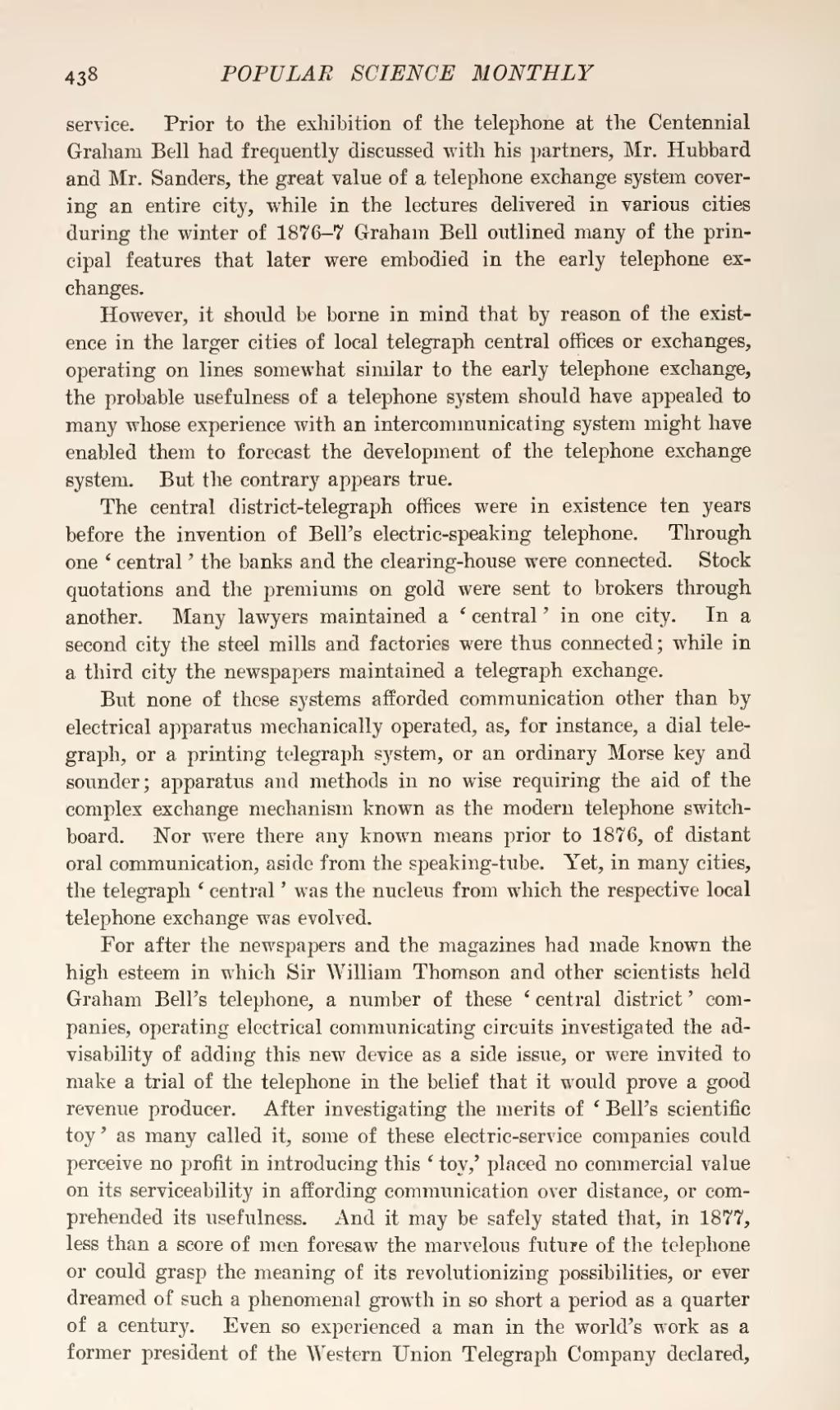service. Prior to the exhibition of the telephone at the Centennial Graham Bell had frequently discussed with his partners, Mr. Hubbard and Mr. Sanders, the great value of a telephone exchange system covering an entire city, while in the lectures delivered in various cities during the winter of 1876-7 Graham Bell outlined many of the principal features that later were embodied in the early telephone exchanges.
However, it should be borne in mind that by reason of the existence in the larger cities of local telegraph central offices or exchanges, operating on lines somewhat similar to the early telephone exchange, the probable usefulness of a telephone system should have appealed to many whose experience with an intercommunicating system might have enabled them to forecast the development of the telephone exchange system. But the contrary appears true.
The central district-telegraph offices were in existence ten years before the invention of Bell's electric-speaking telephone. Through one 'central' the banks and the clearing-house were connected. Stock quotations and the premiums on gold were sent to brokers through another. Many lawyers maintained a 'central' in one city. In a second city the steel mills and factories were thus connected; while in a third city the newspapers maintained a telegraph exchange.
But none of these systems afforded communication other than by electrical apparatus mechanically operated, as, for instance, a dial telegraph, or a printing telegraph system, or an ordinary Morse key and sounder; apparatus and methods in no wise requiring the aid of the complex exchange mechanism known as the modern telephone switchboard. Nor were there any known means prior to 1876, of distant oral communication, aside from the speaking-tube. Yet, in many cities, the telegraph 'central' was the nucleus from which the respective local telephone exchange was evolved.
For after the newspapers and the magazines had made known the high esteem in which Sir William Thomson and other scientists held Graham Bell's telephone, a number of these 'central district' companies, operating electrical communicating circuits investigated the advisability of adding this new device as a side issue, or were invited to make a trial of the telephone in the belief that it would prove a good revenue producer. After investigating the merits of 'Bell's scientific toy' as many called it, some of these electric-service companies could perceive no profit in introducing this 'toy,' placed no commercial value on its serviceability in affording communication over distance, or comprehended its usefulness. And it may be safely stated that, in 1877, less than a score of men foresaw the marvelous future of the telephone or could grasp the meaning of its revolutionizing possibilities, or ever dreamed of such a phenomenal growth in so short a period as a quarter of a century. Even so experienced a man in the world's work as a former president of the Western Union Telegraph Company declared,
